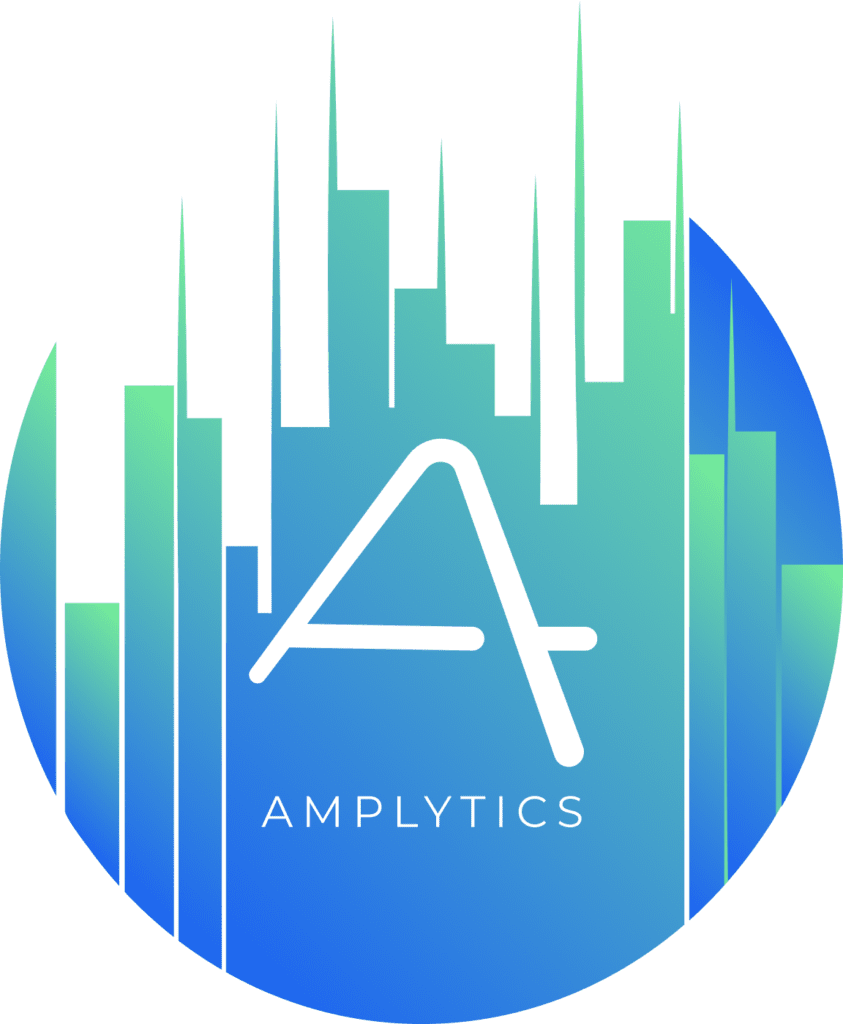One of the ways that experienced marketers differentiate themselves from less-skilled professionals is by demonstrating their value. Metrics provide marketers with data that they can use to quantify the effectiveness of their ad campaigns, strategically optimize their efforts for better results, and share the reasoning behind their decisions with colleagues and clients. We’ve got clear and actionable insights you need into which vital LinkedIn metrics to measure, why they matter, and how to effectively leverage them to refine your marketing strategies. Whether you’re looking to boost engagement, increase conversions, or just get a better return on your investment, this guide will steer you toward success.
How to Measure LinkedIn Metrics
LinkedIn metrics are a set of data points that quantify the performance of your advertising campaigns on the platform. These metrics encompass a range of information, from how many people see your ads to how they interact with them. Marketers can analyze metrics to gauge the effectiveness of their strategies, identify areas for improvement, and better understand their audience’s behavior. This allows you to optimize ad spend by tailoring content to your target demographic. Metrics help marketers achieve goals including brand awareness, lead generation, and direct sales.
LinkedIn Campaign Manager is the primary tool marketers use to track and analyze their ad campaigns’ performance. It provides a comprehensive dashboard displaying various metrics such as click-through rates, impressions, engagement, and conversions. To effectively measure these metrics, you should:
- Improve Ad Relevance and Quality: Better ads have better engagement rates, lowering cost per click. Focus on creating compelling ad copy and eye-catching visuals that resonate with your target audience.
- Refine Your Targeting: Narrow your target audience to the most relevant users. Aim at demographics, job functions, industries, or interests that are most likely to engage with your ads.
- Use A/B Testing: Experiment with different versions of your ads to see which one performs better in terms of engagement and CPC. Test different elements like headlines, images, and call-to-actions to find the most effective combination.
- Optimize Bidding Strategy: Experiment with options such as automated bidding, maximum cost bidding, and target cost bidding to find the most cost-effective approach for your campaigns.
- Monitor and Adjust Regularly: Regularly monitor your campaigns and adjust your strategies based on performance data.
By implementing these strategies, you can effectively reduce your CPC on LinkedIn, ensuring that you are getting the most value out of your advertising budget. Remember, the goal is not just to reduce costs but to do so while maintaining or improving the quality of your engagements and conversions.

These are the 9 most important LinkedIn metrics to measure:
Cost per Lead (CPL)Click-Through RateCost per Click (CPC)Cost per Thousand Impressions (CPM)ReachFrequencyEngagement RateLead Form Conversion RateExternal Conversion Rate
Cost Per Lead (CPL)
Whether you’re running a LinkedIn single image ad or any other campaign, Cost Per Lead (CPL) is one of the most important LinkedIn metrics to measure, as it directly reflects the efficiency of an ad campaign in generating leads relative to its cost. CPL is calculated by dividing the total ad spend by the number of leads generated from the campaign. For instance, if you spend $500 on a campaign and acquire 50 leads, your CPL would be $10 per lead.
This metric is particularly important for campaigns focused on lead generation, as it helps in evaluating the cost-effectiveness of different strategies and ad formats. A lower CPL indicates a more efficient campaign where you are generating more leads for less money. However, it’s important to balance the quest for a low CPL with lead quality. Sometimes a slightly higher CPL might be acceptable if the leads are more qualified and have a higher chance of converting into customers.
Industry benchmarks for CPL can vary widely; for instance, B2B campaigns might have a higher CPL compared to B2C due to the typically higher value of B2B transactions.
Click-Through Rate
Click-Through Rate (CTR) represents the percentage of users who clicked on your ad after seeing it. CTR serves as a direct measure of your campaign’s effectiveness. It helps in evaluating whether your ad’s message, design, and call-to-action (CTA) resonate with your audience.
Why is CTR an Important Metric on LinkedIn?
A high CTR shows not only that your ad is being seen but also that it’s compelling enough to encourage viewers to act. A high CTR can mean more efficient use of your ad budget, as it suggests that impressions are being converted into valuable clicks. Monitoring CTR helps in the continuous optimization of your campaigns. Experiment with different ad elements (such as imagery, ad copy, and targeting) and observe changes in CTR to determine what works best for your audience.
What’s a Good Click Thru Rate for a LinkedIn Ad?
A good CTR benchmark on LinkedIn varies by industry and campaign objective but a CTR above 0.85% is generally considered desirable. Our internal benchmarks suggest a CTR of 1.25% is achievable for lead generation ads.
Cost Per Click
Cost per Click (CPC) is a metric that represents your average cost each time a user clicks on your LinkedIn ad. Clarity around your CPC is vital for several reasons:
- Budget Management: Financial constraints are always a marketing concern. A lower CPC means you’re spending less for each click, which optimizes use of your advertising budget.
- Campaign ROI: Your CPC directly affects the return on investment (ROI) of your campaigns. By lowering your CPC, you increase the quantity of clicks and potential leads without increasing your budget.
- Strategic Adjustments: Factors like targeting, ad scheduling, and bid strategies can all impact CPC. Monitoring your CPC allows you to make strategic adjustments to your campaigns.
What is a Good CPC for LinkedIn Ads?
Knowing the average CPC in your industry helps you benchmark your performance against competitors. letting you know whether you’re overpaying for clicks compared to similar companies and campaigns. A “good” CPC on LinkedIn can vary widely depending on factors like industry, target audience, and ad format. However, as a general benchmark, an average CPC on LinkedIn is typically between $8 to $10. (All LinkedIn metrics in this blog have been sourced from this report.)
How to Reduce LinkedIn CPC
Reducing the Cost per Click (CPC) on LinkedIn is a strategic move that will improve the cost-effectiveness of your advertising campaigns. Here are some tips for LinkedIn ads to help you achieve a lower CPC:
By implementing these strategies, you can effectively reduce your CPC on LinkedIn, ensuring that you are getting the most value out of your advertising budget. Remember, the goal is not just to reduce costs but to do so while maintaining or improving the quality of your engagements and conversions.
Cost per Thousand Impressions
By providing a macro view of your ad’s visibility on the platform, Cost per Thousand Impressions (CPM) gives you an idea of the reach of your LinkedIn campaign, indicating how many times your ad has been seen. This data is essential for evaluating overall campaign performance.
What are LinkedIn Ad Impressions?
Impressions are a fundamental metric that refers to the number of times your ad is displayed on the platform. To understand your cost per thousand impressions (CPM), compare impressions with the number of unique users seeing your ad.
CPM is particularly important for campaigns aimed at increasing brand visibility. High impressions mean your ad is getting a wide exposure. Leverage data even further by analyzing the frequency of your ad’s appearance to individual users. This is vital in understanding if you’re reaching a broad audience or repeatedly targeting the same users. Over time, tracking your cost per thousand impressions will enable you to optimize your campaign. If your impressions are low, it might indicate a need to revise your targeting or bid strategy. CPM data allows you to gauge if you need to increase or decrease your spend to achieve desired visibility. Use it to inform effective budget allocation.
Reach
Reach measures how many unique users have seen your LinkedIn ad and helps you to evaluate whether your ad is effectively penetrating your target market. High reach data is especially desirable for campaigns aimed at maximizing brand awareness, as it indicates that a large and varied audience is seeing your message. This is particularly important when trying to expand your brand presence to new demographics or geographic areas.
The benchmark for reach depends heavily on the size of your target audience and the scope of your campaign. For instance, a niche B2B campaign may have a smaller reach but could still be highly effective if it’s reaching the right people.
In contrast, a B2C campaign aiming for broad awareness will typically strive for a higher reach. Monitoring reach over time can reveal insights into how well your ad resonates with different audience segments and can guide adjustments in targeting to optimize campaign performance.
Frequency
Frequency refers to the average number of times a LinkedIn user sees your ad. This metric helps marketers strike the right balance between ensuring adequate exposure and avoiding over-saturation. Repeated viewings can lead to ad fatigue, causing users to become disinterested or annoyed. Conversely, a low frequency might not be enough to make a lasting impression. The ideal frequency ensures that your ad is memorable without becoming overwhelming.
Optimal frequency is subjective and should be tailored to the campaign’s goals. For campaigns aiming to build brand recognition, a higher frequency might be necessary.In contrast, for campaigns focused on lead generation or direct response, a lower frequency could be more effective. A lower frequency can be achieved by rotating in additional ad creative. By monitoring frequency and correlating it with engagement and conversion rates, you can fine-tune how often your target audience sees your ads to optimize campaign effectiveness.
Engagement Rate
Engagement Rate is a measure of how users interact with your ads. It encompasses actions such as likes, comments, shares, and clicks. This metric is a strong indicator of how compelling and relevant your audience finds your ad content. A high engagement rate generally suggests that your ad resonates well with viewers, prompting them to interact with your content.
An ad that engages is more likely to leave a lasting impression and drive meaningful actions. To improve engagement rates, focus on creating high-quality content that speaks directly to the needs and interests of your target audience. Drive user engagement with visually appealing graphics, compelling copy, and a clear call to action. Regularly test different ad formats and content styles to understand what inspires your audience. Across all industries, LinkedIn suggests using 1% as the benchmark for single image ad engagement and 0.93% for carousel ads.
Lead Form Conversions
Lead Form Conversions are a direct indicator of the success of your campaign. They show whether your ad is not just attracting attention but also compelling users to take the desired action.
How Does LinkedIn Define Conversion?
LinkedIn defines a conversion as a desired action taken by a user after interacting with your ad. This action can vary depending on your campaign goals and includes completion of a lead form. Conversion data provides insights into the behavior and preferences of your target audience.
Understanding lead form conversions is critical to accurate ROI calculation. By tracking conversions, you can understand how effectively your advertising efforts are translating into tangible business results. A higher conversion rate generally indicates a more effective campaign, which might justify increasing your investment.
How to Calculate Conversion Rate for LinkedIn Ads
Track lead form conversion data by setting up conversion tracking for your ads in LinkedIn’s Campaign Monitor.
Define what constitutes a conversion for your campaign and then monitor these actions through the platform’s analytics tools. The conversion rate is calculated by dividing the number of conversions by the total number of clicks on your ad, then multiplying by 100 to get a percentage. A good conversion rate for LinkedIn ads can vary based on industry and campaign goals, but typically, a rate of around 10% is considered solid.
External Conversion Rate
The External Conversion Rate is a measure of how many users complete a desired action on your website or another external platform after clicking on your LinkedIn ad. This metric demonstrates the effectiveness of your LinkedIn ads in driving real-world outcomes, such as sales or sign-ups. A healthy external conversion rate indicates that not only is your ad driving traffic to your site, but that the traffic you’re generating is taking meaningful actions that align with your business goals. To optimize your external conversion rate, ensure that your landing pages are closely aligned with the message of your ads and provide a seamless user experience. They should load quickly, be mobile-friendly, and have a clear and compelling call to action. Additionally, it’s important to target the right audience with your ads; the more aligned the audience is with your offering, the higher the likelihood of conversion.
LinkedIn recommends aiming for an external conversion rate of approximately 2.5%.
Continuously Monitor LinkedIn Metrics to Measure with Amplytics
Continuously overseeing and analyzing key metrics is the best way to achieve and sustain successful LinkedIn ad campaigns. Amplytics offers advanced tools to track the wealth of data the platform makes available to marketers. Enjoy the confidence that comes with 24/7 campaign monitoring and leverage customizable alerts that enhance your ad performance.
Amplytics is a cutting-edge marketing software for campaign triage to help marketers quickly identify and explore campaigns that need the most attention. Amplytics also automatically monitors paid campaign metrics and sends convenient alerts when they rise above or fall below user-defined benchmarks. Triage and automated alerts when used in concert save marketers time and empower them to scale up their marketing efforts.
Partner with Amplytics to drive decisions with insight to help your company grow. Start your free trial today.


